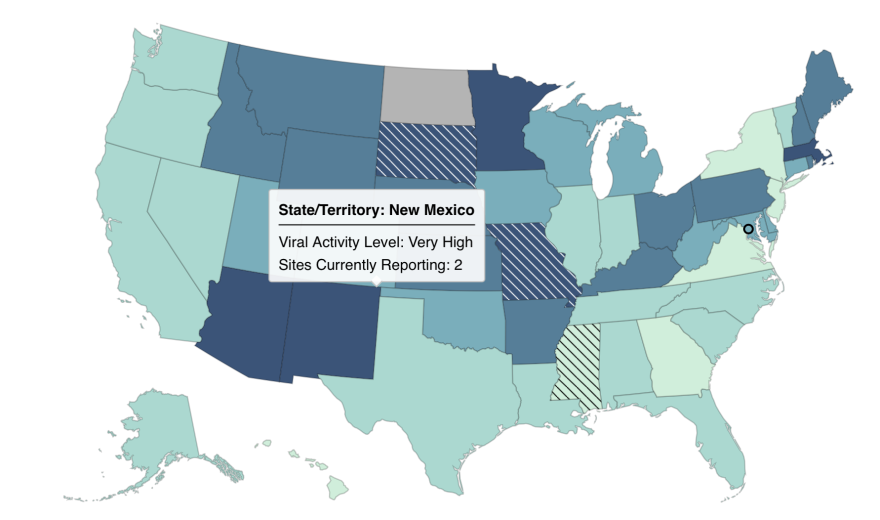Recent wastewater analysis from the Centers for Disease Control and Prevention (CDC), ranks New Mexico as one of four states with a very high level of COVID-19.
Since September of 2020, the CDC has been testing wastewater to trace infectious diseases including COVID-19.
Wastewater monitoring can detect viruses without symptoms, and before people go to their doctor or hospital.
Srikanth Paladugu, bureau chief for New Mexico's Environmental Health Epidemiology Bureau said they’ve been monitoring COVID in wastewater.
“It has been increasing since the beginning of November,” he said.
Miranda Durham, Chief Medical Officer for the Department of Health said that even with the very high level found in New Mexico, as well as in Arizona, Minnesota and Massachusetts, it’s not at the same level as during the height of the pandemic.
“So this would be kind of the normal expected winter bump in cases of COVID-19, not something that's kind of pandemic level and so when they say very high, it's sort of compared to other states,” she said.
Durham said wastewater is just one data point.
“I think all states are sort of doing the same thing, putting together a combined picture of cases, hospitalizations, testing wastewater,” she said. “And you know, if you look at our other indicators, you see a little bump up in COVID indicators, but not anything like off the charts.”
Paladugu said it’s hard to say why there is a high prevalence in New Mexico over other states.
“It could be just that New Mexico is going through that phase of a peak incidence of COVID at this time,” he said.
But while Durham is not panicking, she said it is not too late to get vaccinated for both the flu and COVID-19 and that everyone six months and older can get this year's vaccine.
She recommends the Department of Health helpline for anyone who’s unsure if they need to be vaccinated, which vaccination to get, or where you can get it. She says even people who are uninsured can get help from the public health office where they can get vaccinated at no cost.
Support from the coverage comes from the Thornburg Foundation.




